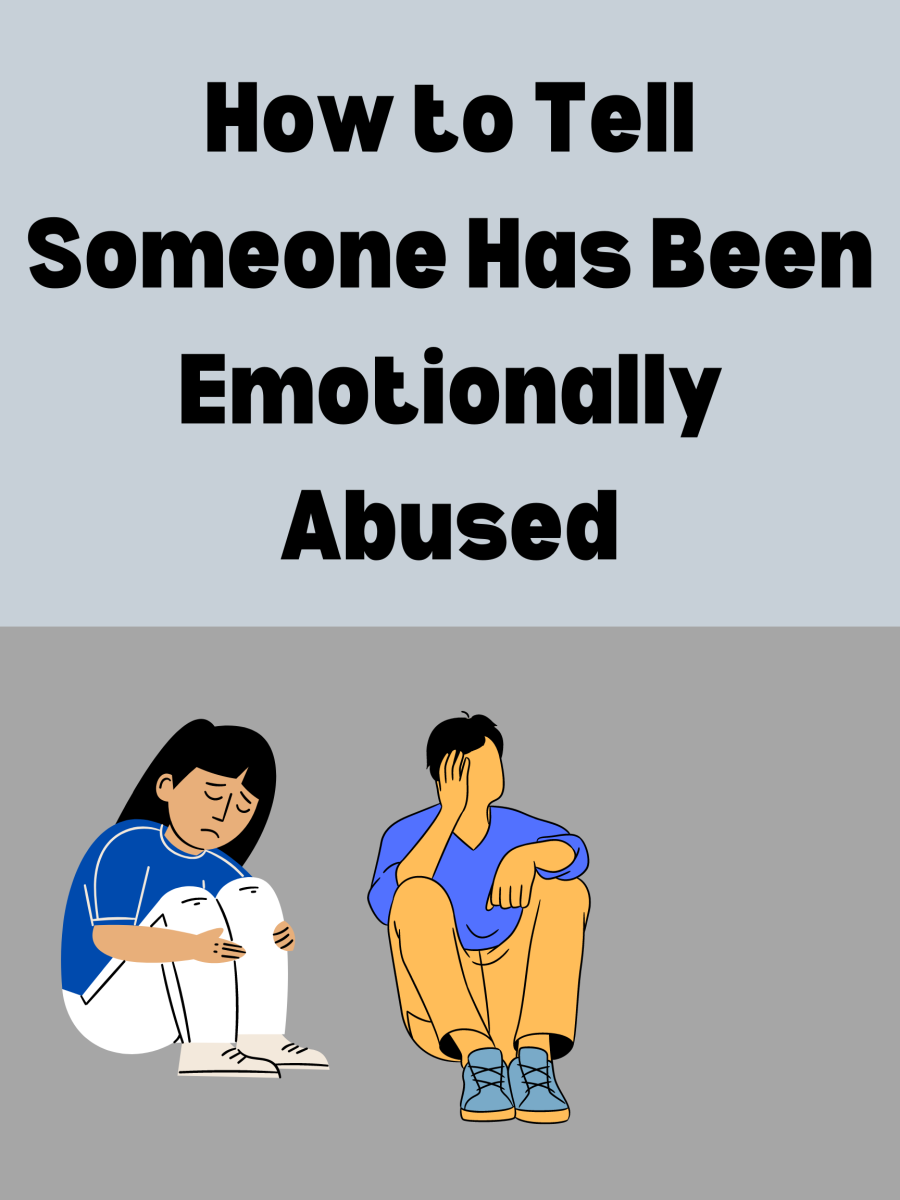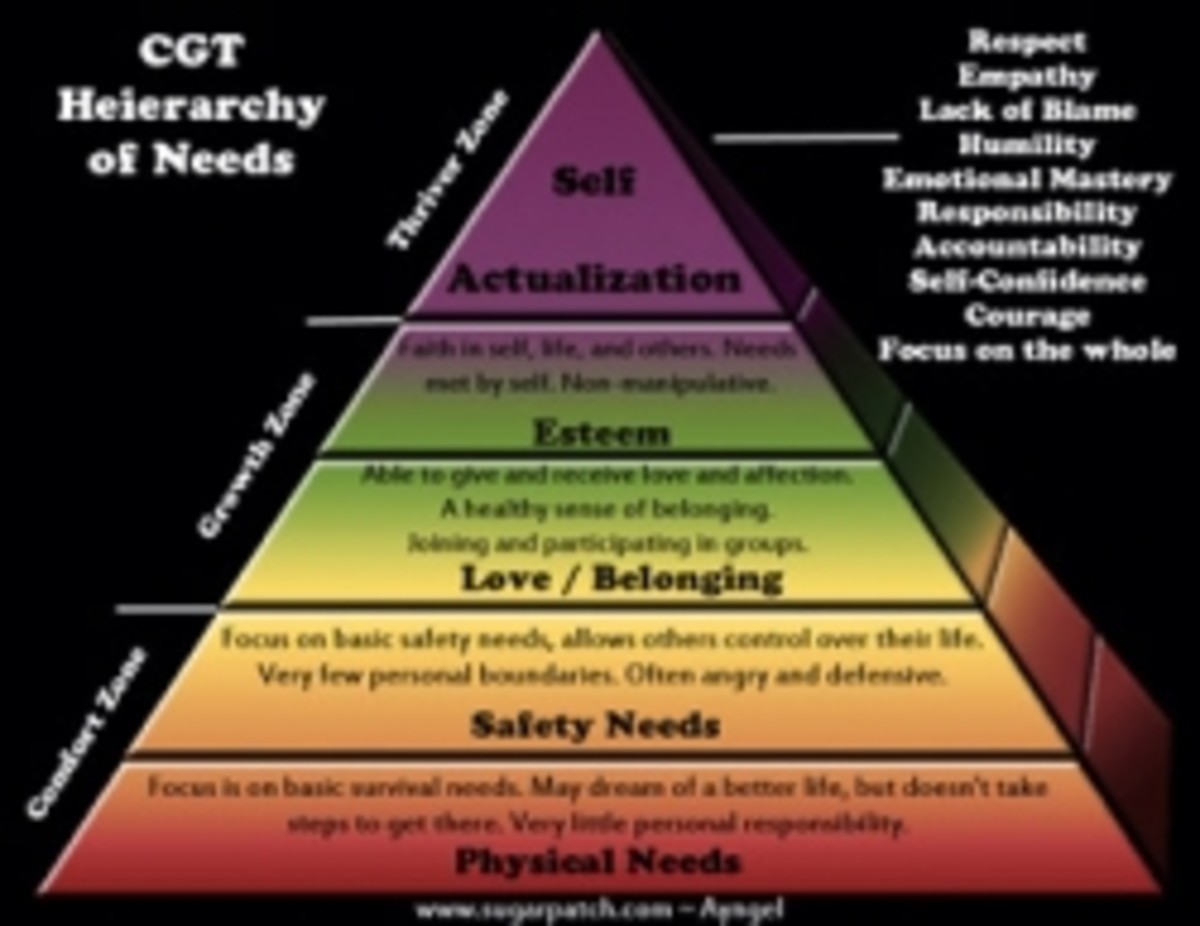Psychology: Children's Behavior Today

Why are Many Children so Angry and Aggressive Today?
Have you ever wondered why there are so many angry and explosive children today?
After 17 years of working as an RN in a school for children with psychiatric and learning disorders, I continue to ponder that same question. As a matter of fact, I have a slew of questions as to why there are so many children with behavioral "issues", and even more questions regarding the laws and regulations that govern the education and treatment that these children receive.
By creating this Lens, I am hoping to raise awareness about some of the mental health issues that plague today's youth.
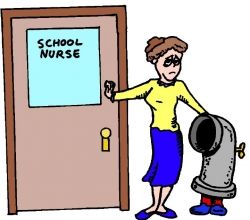
My Focus
Experience is the greatest teacher - and believe me when I say, "I have had 15 years of very tedious experience in the field of pediatric psychiatry." I honestly believe that I have seen it all. However, I am not claiming to be an expert.
The purpose of this lens is not to give you in-depth information regarding disorders, treatment, therapy or medications. Instead, the content I will present is based on my own opinions, observations, and questions that I have developed through my experiences.
My focus will be about:
1) Some of my thoughts as to why behavioral issues appear more prevalent today than throughout earlier history.
2) Some issues that I consider to be obstacles that hinder the treatment of children with special needs.
I will start the lens off with a very brief overview of a few of the more common disorders. I will provide some links, through which you can gather more in-depth information regarding disorders.
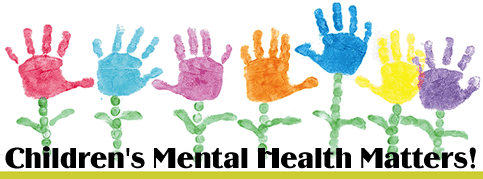
How Does a Psychiatrist Determine a Diagnosis?
Psychiatrists use the DSM IV criteria (The Diagnostic and Statistical Manual of Mental Disorders) to assist in diagnosing and treating a person with mental health issues. Certain criteria must be met before a diagnosis can be given.
- Psyweb.com/DSM
A guide to the criteria used to diagnosis psychiatric disorders.

Common Psychiatric Disorders in Children
#1 ADHD
Attention Deficit Hyperactivity Disorder (ADHD) is characterized by inattention, hyperactivity, and impulsiveness.
This disorder is most often treated with medications called stimulants, such as: Ritalin, Vyvanse, Adderall, Focalin and others. Some non-stimulant medications are also used, such as Strattera and Intuniv.
I have seen first hand how a child, who is sometimes literally "climbing the walls", will settle within 20 minutes of taking their medication. They become more focused on their work and are able to learn. Although, it doesn't always work this perfectly. Sometimes a child may remain a little hyper, but is generally more easily redirected.
These are a few links which will give you more information regarding ADHD and treatment.
- HealthyChildren.org
ADHD is a condition of the brain that makes it difficult for children to control their behavior. It is one of the most common chronic conditions of childhood. It affects 4% to 12% of school-aged children. About 3 times more boys than girls are diagno - MayoClininc.com
ADHD has been called attention-deficit disorder (ADD) in the past. But, ADHD is now the preferred term because it describes both primary aspects of the condition: inattention and hyperactive-impulsive behavior. - National Institute of Mental Health
Attention deficit hyperactivity disorder (ADHD) is one of the most common childhood disorders and can continue through adolescence and adulthood. Symptoms include difficulty staying focused and paying attention, difficulty controlling behavior, and h
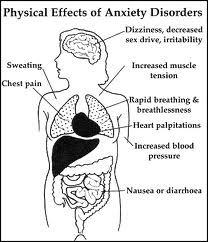
#2 Anxiety Disorder
Anxiety Disorder is characterized by irritability, restlessness, and trouble concentrating resulting in poor school performance. They often shy away from social interactions and have difficulty making friends. They frequently have physical symptoms such as palpitations, elevated blood pressure and heart rate, abdominal pain, nausea and vomiting, diarrhea, and headaches.
Anxiety disorders are often treated through cognitive-behavioral therapy and medications.
- ChildAnxiety.net
Here, you will find a list of anxiety related disorders that may be experienced during childhood - NIMH.Nih.gov/health
When anxiety becomes an excessive, irrational dread of everyday situations, it has become a disabling condition. Examples of anxiety disorders are obsessive compulsive disorder, post-traumatic stress disorder, social phobia, specific phobia, and gene

#3 Mood Disorders
Mood disorders refer to a category of mental health problems that include all types of depression and bipolar disorder. Mood disorders are sometimes called affective disorders. (See link below - Wexner Medical Center)
Symptoms can vary from person to person and also depends on the specific mood disorder that the child may have. Some of the symptoms include intense feelings of sadness, hopelessness, inadequacy, irritability, aggression, sleep problems, changes in appetite, etc.
Mood disorders are often treated with psychotherapy - and is often combined with medications such as antidepressents, antipsychotics, anticonvulsants, etc.
- Wexner Medical Center
Mood Disorders Overview of Mood Disorders
#4 Other Disorders
There are many other disorders such as autism, PDD, eating disorders, disruptive disorders, etc.
- WebMd.com
There are several different types of mental disorders that can affect children and adolescents. This link will give you an overview of the many other disorders.
1) Why Is Mental Illness in Children So Prevalent Today? - Did It Not Exist Long Ago?
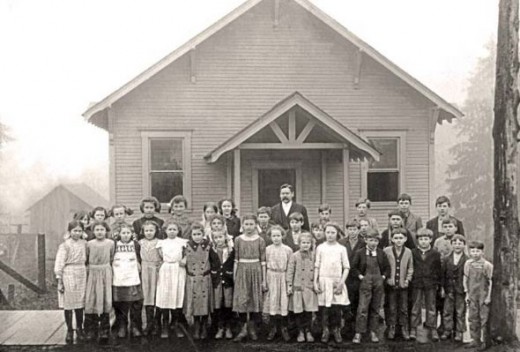
This is a question that I frequently ponder. How often do you hear an older person say, "Children weren't like this in my day." We've all heard our grandparents tell stories of the "innocent childhood pranks" and the stories of that "one bully". However, I don't recall my grandparents telling stories about classmates having drastic mood swings, going into rages and becoming violent.
First, one has to understand a little about childhood growth and development. Then, one must have a little knowledge of the evolution of society.
In short:
A child's nature is to be curious and active. Children learn by living, playing, observing, and self-exploring. In ancient times, people were basically hunters and gatherers. The men hunted food and the women gathered food. Children were free to play and explore their world all day, thus, learning all they needed in order to survive as adults. Children were not expected to be responsible for real labor until their teens.
With the rise of agriculture, families settled down on farms. Families were often very large so that there were enough children to help with all the farming chores and care for the younger children. Here, we see the beginning of children being forced to work and having less time for play and exploration. When their curious and active nature took over, corporal punishment was used make them behave and to work.

With the rise of industry, children were forced to work in crowded, filthy, unhealthy factories along with the adults. The cruel punishment to keep children in submission continued. Many children even died under such circumstances. There was no distinction between children and adults. And schooling was reserved only for the wealthy.
Persons who had "gone mad" or "insane" were referred to as "lunatics". They were often locked away in dark and dirty asylums. Children and adults were thrown in together. Could these be the same children, who today, are diagnosed with mood disorders, ADHD, etc? In the 1600's, some of the asylums started creating a separate unit for children. There is little documented history on these patients.
As the industrial world progressed and people became more aware of emotions and behavior, the humanitarian movement started, and laws were made to limit work hours for children, and to start providing education for children. It was believed that repetition and memorization was important for children to learn. However, as I explained earlier, this is not the natural way for children to learn. Rather, it is a boring and tedious task. Severe punishments continued to be used for children who "misbehaved".
In the 1700's, New England states created free public education for all children. The New England Primers were the main source of education. Education was based on morality, with prayer being very important. Reading, writing and math were taught along with certain trades that were common in that jurisdiction. Mothers stayed at home with their children and religion was important. Children learned respect for others and lived by a stricter moral teachings. By the mid 1700's, the literacy rate was at it highest in all of American education history. Educators became stand-in parents and disciplinarians of the children during the school day. Punishments did remain harsh for children that "misbehaved".
Up until the early 20th century, punishments remained harsh. Education became government run and the curriculums changed greatly. All children were required to go to school - and all children were required to learn and master all of the same subjects. As humanitarians worked for children's rights, corporal punishment was banned - but certain forms of punishment continued through the early 1960s. Many changes took place in the schools in the 1960s, including the removal of prayer, and morality became a thing of the past. Eventually, all forms of discipline were basically banned.
Read More on the Web...
- pb.rcpsych.org
The forgotten children: children admitted to a county asylum between 1854 and 1900. This is a brief article about mental health issues regarding 195 children admitted to an asylum in the late 1800's. - History.com
Brief history of child labor.
2) Has Morality Died?
In the 1960s, there were three pivotal lawsuits that attacked the spiritual well-being in the schools. These were:
1) Engel v. Vitale, 1962
2) Murray v. Curlett, 1963
3) Abington Township School District v. Schempp, 1963
In each case, the lawsuit was filed by persons who wanted prayer taken out of the schools. The decision? Prayer was banned from schools. Children are not taught morality - right and wrong - respect for life. They grow up not knowing God and goodness. The family is not the intact unit that it once used to be. Mothers are forced out into the workforce, leaving children home alone and unsupervised. Most families don't even have a sit-down dinner together.
Children are exposed to violence on a daily basis. Television shows, commercials, and even cartoons have been overtaken with violence, sex, drugs, alcohol and disrespect for life. And what's up with adult cartoons? Are they just a ploy to poison the minds of our children. Even most of the video games that kids play are filled with violence. The news is filled with sex, crime and violence. It is often glorified by the media and perceived as "cool" by kids.
Many children have parents with substance abuse issues and often use violence and aggression in attempt to solve problems. Many children witness violence in their own homes on a daily basis. Many children are even physically, verbally, and/or sexually abused by their parents or other caregivers.
Immorality and violence is just the norm now. Children are desensitized to the immoral views of society. How can we expect them to behave any differently when they are surrounded by it?
- AllAboutHistory.org/schoo-prayer.htm
The three pivotal lawsuits that lead to the banning of prayer from public schools.
What Do You Think?
Do you think prayer should have been left in schools?
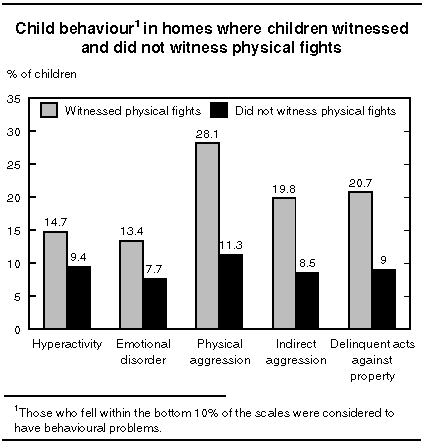
http://www.statcan.gc.ca/daily-quotidien/010628/dq...
Children who are raised in homes where violence is prevalent often have more behavioral problems as per the chart above.

3) How Has the School System Failed?
In America, our education system is known as compulsory education. All children are required to attend school and learn and master all of the same subjects. It is expected that all children should be able to learn all of the same concepts and facts. Children with learning disorders may have a specialized curriculum, but they are still required to take the same subjects. They are still tested and require passing grades. Most public school systems do not want to pay to send these children out into special programs, so they try to keep them in their home school - and sometimes in with the general population.
It seems to me, that if we are all unique and have our own special talents, then we would not all be able to master the same exact things. I feel that most of the content that children are forced to learn is boring and is really just tedious work for them. Their nature is to play, talk, observe, explore, etc. It is not natural for children to sit still for 45 - 60 minutes and listen to boring information that they find little relevance for in their world.
For a child that has ADHD, this is torture. That child cannot sit still, cannot stay focused, and cannot learn in such a situation. The child becomes restless, loud, silly, unfocused, and disrupts the learning of other students. The teacher gets upset (and rightly so - because they must make their students produce passing grades in order for them to keep their jobs).
The child then becomes more agitated and upset and may often feel "stupid" and humiliated. He/she then becomes angry and impulsive, and begins to curse, rip up papers, etc. The teacher is basically stripped of all disciplinary measures. The only disciplinary tools that the teacher has is to redirect the child, give him/her choices, remind him/her of the consequences for their actions.
This is not effective for a child with ADHD, learning disorders, mood disorder, etc. Withholding recess time is a common consequence for misbehaving. So, now the child has lost all focus except for the fact that he/she has not "earned recess". Anger and frustration take over. The child gives way to impulses such as throwing objects (even chairs and desks), and even physically attacking the teacher, or even another child whom they believe is making fun of him/her at the moment.
He/she is often allowed to spin out of control with their behavior because of strict laws that prevent allowing adults (teachers, school staff, etc) from even touching them or hugging them. Once their behavior has spun out of control, imagine how they must feel.
TOTALLY OUT OF CONTROL! - UNSAFE - POWERFUL ENOUGH TO SELF-DESTRUCT - without anyone stopping them. The adult in charge can not even lay a hand on that child unless he/she is appropriately trained, and only if the child is in imminent danger of harm to self or others. Children today are allowed to destroy entire classrooms, computers, and any other property they so desire. And they know that adults can not touch them. And it is a huge risk for an adult to touch that child, for fear of a lawsuit. This topic can go on forever.
And how must the other children in the room feel, especially a child with severe anxiety or autism. Such violent events can even trigger children with "post traumatic stress syndrome". Another child may perceive that the aggressive behaviors are directed toward them - and that child may start to become aggressive. And soon - you have an entire classroom out of control.
I certainly do not believe in corporal punishment - however, I believe that some sort of discipline is very necessary. Without discipline to control the children - we use medication for overly active children to help them remain seated for 6 hours, and repeat and memorize content. Is it really necessary to force these children to endure subjects that they cannot grasp or understand? Why not focus on their strengths and help them to develop skills in those areas? If they are given an opportunity to excel at something they enjoy - they might be a little more open to learning other subjects.
Who Killed School Discipline?
- City-journal.org
This is a link which will provide you with information regarding the concerns over the lack of discipline in today's schools.
4) Why Standardized Testing is Wrong!
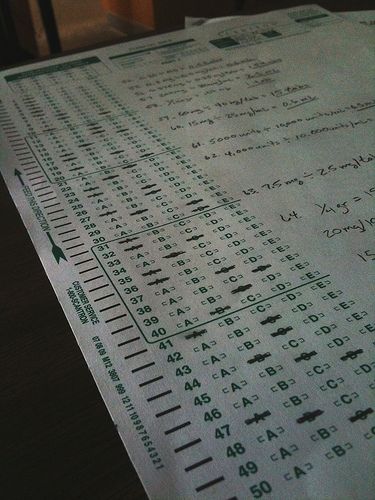
This work is licensed under a Creative Commons Attribution 2.0 Generic License.
As I said above, most school systems are keeping special needs children in their home schools instead of referring them out to specialized programs. Children with learning and behavioral disorders who are left in their home schools and placed in "special classes" are often made fun of. These children frequently feel embarrassed and often have a low self-esteem.
Since the public school systems are trying to keep children in their own schools, specialized programs are receiving the sickest and most aggressive children. However, these programs are receiving less funding to keep running. This often means a cut back in staff required to keep the program running smoothly. There are several reasons, but one of the reasons is that these programs often score poorly in standardized testing.
What is standardized testing? It is a series of tests that is used in helping to assess how effectively students are learning in each school. It requires that all children test at their age appropriate grade level, not at their cognitive level. For example, a 12 year old child whose cognitive level is that of a 2nd grader, must still test at a 6th grade level.
This is equivalent to making a 7 year old, 2nd grade student take a test designed for the average 6th grade student. This is unfair. Imagine how frustrating this is for a child with processing and learning difficulties. Many children have incredibly high levels of anxiety on these test days. They know they do not know the answers. They may already have low self-esteem and feelings of inadequacy, and now they are being tested on information that society is basically saying, "You are 12, you should know this stuff, what's wrong with you?"
Sure, the tests can be modified, but the guidelines make this very difficult. The easiest way to modify the test is to assign a moderator to that child during the test. This in itself is a difficult thing for school personnel to make happen. Each child must have his/her own individual moderator. In a specialized program, most of the children require a moderator. It is often difficult to find volunteers to do this. Generally, every staff person must be a moderator, leaving little to no staff to handle behavioral issues as they arise.
The moderator must read the exact wording of the test to the child, and then mark down his/her answers. In no way, can that moderator explain what the question means or help the child understand the question in words that he/she would understand. How frustrating for that child.
1) Imagine a classroom with 10 students, and 7 of those students each have a moderator trying to quietly read the test to them.
2) Imagine a child with ADHD trying to concentrate.
3) Imagine a child with severe anxiety or a child who suffers from auditory hallucinations having to test in this environment.
4) Imagine a child with severe mood disorder - who is already frustrated - who feels incompetent and has difficulty with simple tasks - who has poor impulse control - and place him/her in this situation. That child is a ticking time-bomb - ready to explode at any moment.
OK - so testing is over and the scores come back. Now, people in government positions want to know why this school is getting such poor test scores. They want to know what is wrong with the curriculum, what is wrong with the teachers. Does anyone stop and wonder what is wrong with the government run educational system?
Many people believe that today's children are over-medicated, that psychiatric disorders are bogus, and medication is not needed!
I also believe many children are over-medicated.
But, I am referring to children with severe psychiatric and behavior disorders. Unless you have walked in the shoes of mental health care providers who care for these children, or the children and families, you cannot begin to understand the reality of the devastating effects these disorders have on their lives.

6) Government Quotas on ADHD Medication Production
There is a lot of controversy that surrounds the use of stimulants for children diagnosed with ADHD. Most of the medications used to treat ADHD are stimulants. These include Methylphenidate (Ritalin, Daytrana, Concerta, Metadate), Dextroamphetamines (Dexadrine), Vyvanse, and Amphetamine/Dextroamphetamine (Adderall), just to name a few. Stimulants can be addictive and can cause cardiac and other side effects. They require close monitoring.
(Photo taken by me)
Recently, non-stimulant medications have been developed to to treat ADHD. These include Strattera, Intuniv and Kapvay. These medications have less side effects, and are not addictive.
Many people argue that doctors are unnecessarily "drugging children". I do think that sometimes, general practitioners may misdiagnose a child as having ADHD and then prescribe stimulants. ADHD should be diagnosed and treated by a psychiatrist - using the DSM IV to assist with the diagnostic process, along with some of the other diagnostic tools available.
For a child who is clinically ADHD, treatment with stimulants is amazingly helpful. These medications can help the most hyperactive and unfocused child be able to calm and pay attention and learn. If the medication is not effective, then it may be possible it is the wrong dose or wrong medication for that child, and maybe a different dose or type of medication should be tried. If several of these medications have been tried without success, it is possible that the child does not have clinical ADHD.
The use of stimulants for ADHD was found purely by mistake in 1937 by Charles Bradley. Charles Bradley was conducting neurological evaluations on children suffering from pneumoencephalography headaches - due to loss of spinal fluid. He was using a stimulant named Benzedrine - in hopes that it would stimulate the production of spinal fluid. While the Benzedrine did nothing for the headaches, teachers noticed that children with ADHD were better able to focus on school work, thus getting better grades.
Read that story here:
- Wikipedia
More information of how Dr Charles Bradley discovered that the use of stimulants helped children with ADHD focus better in school leading to better grades.
Back to my complaint
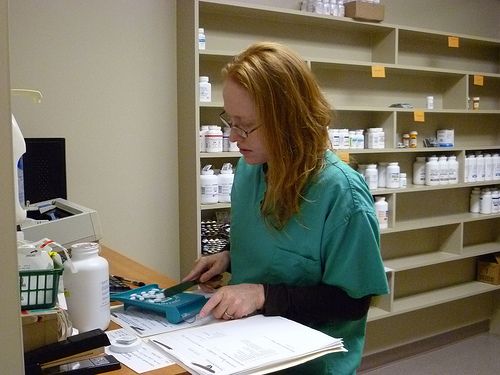
This work is licensed under a Creative Commons Attribution 2.0 Generic License.
http://www.flickr.com/photos/glms1/5512922038/
The government puts quotas on the amounts of stimulants that can be produced in a year. I do understand the need to control stimulants because of their widespread abuse, however, many children suffer the consequences.
Stimulants are controlled substances. These medications have a high potential for being abused. Therefore, the DEA (Drug Enforcement Agency) sets quotas on the numbers that can be manufactured by pharmaceutical companies. Once those quotas have been met for the year, production of these medications must wait until the new year. Then it may take another month or more before the pharmacies receive their stock.
This past year (2011), as early as August and September, pharmacies started seeing shortages of these medications - they would often have to call around to other pharmacies for extra stock, and patients would have to wait a week or so. In October, the shortage was worse. In November, some pharmacies were out of these medications and had to tell patients that they would not be able to get any more of the medication until after the new year. Even then, it would be another month or more after January 1st before pharmacies would receive any shipments. Without their medication, many children's behavior spiraled downward quickly.
My thoughts on "why the shortage?"
1) There is the abuse factor. A lot of college students abuse them - to help them stay up all night and study. They are often abused and sold as street drugs. Are there a lot of general practitioners that are prescribing these stimulants to persons without accurately diagnosing them?
2) There is so much wasting of medications. Many times, doctors will prescribe a medication, only to find out a few days later that the dose needs to be adjusted or even changed to a different medication. Instead of writing the prescription for a week or two to see how the child responds, the prescription is written and filled for a month supply. This is often to save patients money due to co-pays on medical insurance. Then, the leftover medication needs to be disposed due to strict regulations regarding controlled substances. In group homes, hospitals, residential care facilities, etc, the wasting of pills is a daily occurrence.
3) Also, the cheaper generic brand supplies seem to be the ones to run out. The DEA assures that there are enough medications available. However, these are usually the more expensive brand name medications. Often, insurances will not authorize use of these brand names due to high cost, and the parents are unable to afford to pay for the brand name medications. I wonder, do the pharmaceutical companies make more of the brand names in attempt to make more money and/or to rebel against the quotas?
A Scenario Frequently Seen:
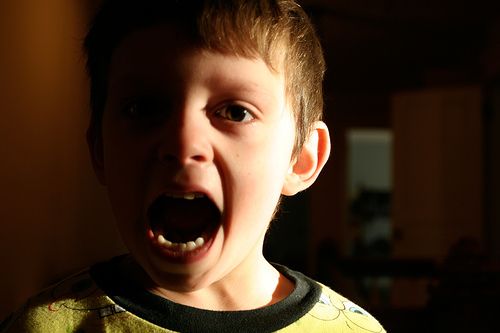
This work is licensed under a Creative Commons Attribution 2.0 Generic License.
http://www.flickr.com/photos/clairity/2105532204/
Little Billy has been doing poorly in school. He constantly talks, is unable to remain in his seat, demonstrates loud/silly/disruptive behavior, is rude, is often very agitated and sometimes becomes physically aggressive. He is failing school, has had multiple suspensions, and now has been expelled from the public school system. He has been referred to a special, level V, non-public school program. After diagnostic testing, individual psychotherapy, and psychiatric evaluations, he is diagnosed with ADHD and a mood disorder.
Since admission to the program, he has spent most of his time in the resource room because he is extremely loud & silly, and disrespectful. He is unable to understand and follow directions. He is unable focus on classwork. He frequently misinterprets what others say. He believes he is stupid and will never learn. He gets frustrated very quickly and rips up papers and books. He quickly escalates to aggressive behavior such as throwing his chair, knocking over his desk, hitting himself in the face, attempting to bolt from class and the building itself. Therefore, he is not learning.
Once he is diagnosed and placed on Adderall and a mood stabilizer, he is a different child. His visits to the resource room have decreased greatly. He is able to remain in class most of the time and is learning and getting better grades. He actually feels proud of himself.
September - his pharmacy is having difficulty getting his Adderal in stock, and Billy runs out of medications for a few days. He is having difficulty remaining focused, becomes easily agitated, and has increasing visits to resource. After a week, his pharmacy is able to fill the Ritalin prescription and he is back on task and doing well again.
October - his pharmacy is unable to fill his Adderall prescription. They've called around to several other of their branches, but none of them have any Adderall. Once again, Billy is spending more time in resource and is not learning. He can't take some of the other medications because either he is allergic or has had side effects from the others. Other medications are just not effective for him.
There is another medication that is available but it is much more expensive and his insurance won't cover the cost. The parents cannot afford it and Billy goes several months taking a medication that is not really effective for him. For the next 4 months, he remains hyper, irritable, loud/disruptive/silly, off task, and spending much more time in resource. His grades suffer greatly. He loses confidence in himself, and once again believes he is stupid and will never learn. He loses all hope and decides there is no reason to even take the mood stabilizer anymore. He is once again is becoming aggressive and unsafe.
THIS IS ONLY ONE CHILD. THERE ARE MORE CASES LIKE THIS IN THE SCHOOL. STAFF IS OVERWORKED, AND NOW SPENDING MORE TIME ATTEMPTING TO CONTROL BEHAVIOR, AND LESS TIME ACTUALLY TEACHING.
Links on Stimulant Shortages
- NPR.org
Shortage Of ADHD Drugs Has Parents, Doctors Scrambling - Foxnews.com
Shortage of ADHD Drug Adderall Persists - ashp.org
Methylphenidate Hydrochloride Shortage - March 2012 Report - NYtimes.com
F.D.A. Finds Short Supply of Attention Deficit Drugs. Generic vs Brand also discussed in this article.
7) Medical Insurances Dictating Medication Treatment
Medical insurance companies often dictate which medications can be used in the treatment of most disorders - both medically and psychiatrically. This is done to save insurance companies money. Medications are grouped into tiers.
1. Tier I medications are usually the generic brands and are the cheapest in cost.
2. Tier II medications are brand name medications and are a little more expensive.
3. Tier III medications are often more expensive medications that are similar to a one on a lower tier that provides the same benefit for a lower cost. However, these Tier III medications typically have fewer side effects. Other medications are placed in Tier III because they are newer medications on the market and are still being monitored for safety and effectiveness.
4. There is also a tier IV which includes the most expensive medications - usually specialty medications.
Many of the Tier III medications already proven to be more effective and have less side effects, are the ones that insurance companies do not want to pay for.
Therefore, health care providers are forced to prescribe the cheaper medications that have the most side effects or least effectiveness. It is only after a child has no response, side effects, or adverse reactions to these cheaper medications that the health care provider can send documentation to the insurance company for authorization for the better medications.
You can read more about the different tiers of medications in the following links.
Link List
- Patients.about.com
Brief description of drug formulary tiers. - Healthinsurance.com
Discusses the purpose of drug formulary tiers.
Conclusion
There is so much more I could write about this subject.
Yes, there are many children with behavioral issues that do not require medication. They need love and care, discipline and limit setting, supervision/parental guidance, stable and consistent home environments, etc.
But there are many children who also have genetics that put them at greater risk for real psychiatric disorders. There are many children who have been affected by drugs and alcohol while in utero. There are many children who have been victims of lead poisoning. And there are many children who have suffered great emotional trauma and neglect - this affects the way the brain is developed.
I will end it here, and just say that today's world is a complicated place for all of us. But it is overwhelming to those who have suffered great trauma, whether it be physical or emotional in nature. I believe that "mental health disorders" should be renamed something like "neurological brain dysfunction". The brain is an intricate hard-wired network of neurons, neurotransmitters, lobes, ganglia, synapses, connections, inputs, outputs, etc. Everyone's brain is wired a little differently. When there is a dysfunction in particular areas (often due to imbalance of brain chemicals), there is a disruption or malfunction in the transmission of information. Humm - sounds like a medical issue to me - much like electrolyte imbalances, irregularities of electrical activity of the heart, hormone imbalances, diabetes, etc. Mental illness is a real medical disorder for which medications are often a necessary part of treatment.







